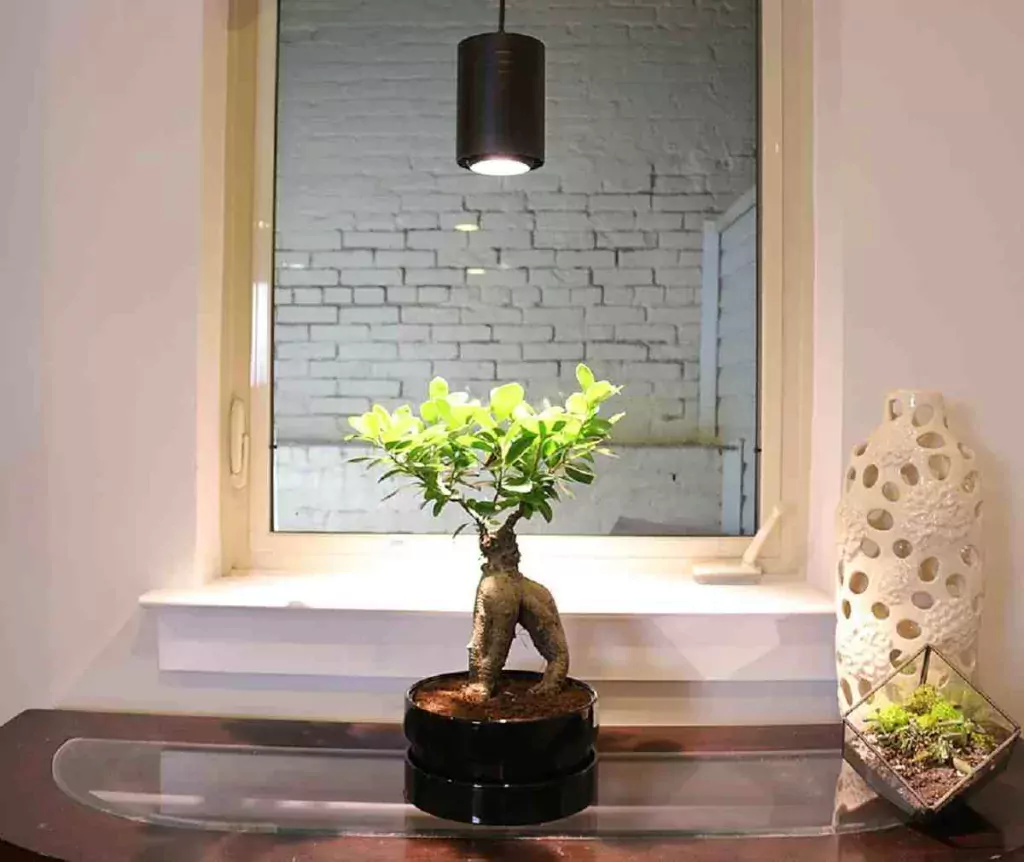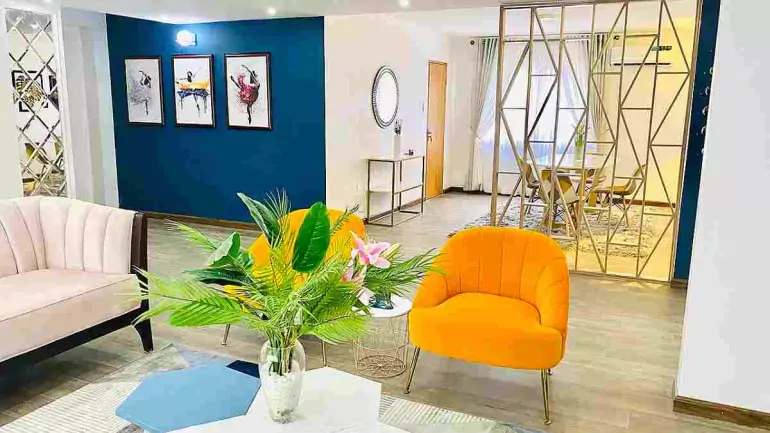ART & DESIGN
Staging your home for an art exhibition requires skills. Here are some tips.
Discover the secrets of staging your home for an art exhibition. Learn how to create an immersive and captivating experience for art enthusiasts with expert tips and techniques.
BY KAZEEM ADELEKE, ARTCENTRON
Are you an artist looking to showcase your artwork in a unique and captivating way? One effective method to consider is staging your home for an art exhibition. Learn the importance of staging and practical tips on how to transform your living space into an art gallery that will leave a lasting impression on visitors.
Art exhibitions serve as a platform for artists to display their creativity and connect with art enthusiasts. However, showcasing artwork in a conventional gallery setting can sometimes limit the overall experience. By staging your home, you can make it a more intimate and immersive environment, allowing viewers to appreciate your art in a different context.
In staging your home for an art exhibition, you have the opportunity to transform different rooms into personalized galleries, each with its theme or concept. The living room could become a vibrant space for large-scale paintings, where viewers can immerse themselves in the vivid brushstrokes and intricate details. The bedroom might showcase delicate sculptures or installations, creating a serene and introspective atmosphere. The kitchen could feature a series of photographs capturing the beauty of everyday life, inviting visitors to contemplate the ordinary from a fresh perspective. By utilizing the various rooms of your home, you can curate a multi-dimensional art experience that engages viewers on a deeper level, allowing them to explore and connect with your creations in an intimate and meaningful way.
Setting the Stage
The first step in staging your home for an art exhibition is choosing the right location within your living space. Identify an area that can accommodate the artworks while ensuring they are easily visible and accessible to visitors. It could be a spacious living room, a well-lit hallway, or even a dedicated studio space.
Before setting up the exhibition, evaluate the available space and consider the layout. Remove any unnecessary furniture or items that may distract from the artwork. Creating an uncluttered and open environment will allow the art to take center stage and provide a more visually pleasing experience.
Lighting and Ambiance for Staging Your Home

Lighting plays a crucial role in showcasing artwork effectively. Whenever possible, utilize natural light sources such as windows and skylights to illuminate the space. Natural light brings out the true colors and textures of the artwork, creating a vibrant and authentic viewing experience.
In addition to natural light, consider incorporating artificial lighting to enhance the ambiance. Track lighting, spotlights, or wall sconces can be strategically placed to provide focused illumination on specific pieces. Experiment with different angles and intensities to create depth and highlight the unique features of each artwork.
When staging a home for an art exhibition, acquiring the right lighting can greatly enhance the overall visual impact. There are several options for obtaining suitable lights. One possibility is to visit specialty lighting stores or art supply shops, where you can find a wide selection of track lighting, spotlights, or wall sconces specifically designed for showcasing artwork. Online marketplaces also offer a plethora of options, allowing you to compare prices, read reviews, and choose the most suitable lighting fixtures for your exhibition. Additionally, consulting with professional lighting designers or seeking advice from experienced artists can provide valuable insights and recommendations on the best lighting choices to create a captivating and dynamic display for your artwork.
To create a cozy and inviting atmosphere, complement the lighting with appropriate ambiance elements. Soft background music, scented candles, or carefully selected furniture can contribute to the overall aesthetic appeal and make visitors feel comfortable and engaged.
Furniture and Display
Selecting the right furniture pieces is essential to creating an artful and harmonious environment. Opt for furniture that complements the style and theme of the artworks without overpowering them. Simple and minimalist designs often work well, as they provide a neutral backdrop that allows the art to shine.
When arranging the artwork, consider the size, color, and subject matter of each piece. Experiment with different compositions and groupings to create visually appealing arrangements. Placing artwork at eye level or slightly above will ensure optimal viewing for visitors.
For sculptures or three-dimensional artworks, incorporate pedestals or plinths to give them prominence. Elevating these pieces not only draws attention but also allows viewers to appreciate them from different angles and perspectives.
Wall and Floor Treatments
The choice of wall and floor treatments can significantly impact the overall aesthetic of your exhibition. Opt for neutral colors such as white, beige, or light gray for the walls to create a clean and cohesive background that doesn’t compete with the artwork. Alternatively, consider using accent walls or wallpapers to add visual interest and create a unique backdrop for specific pieces.
When it comes to flooring, explore options beyond traditional carpets or hardwood. Consider using rugs, vinyl flooring, or even temporary installations like faux grass or patterned tiles to add an element of surprise and creativity. The flooring choice can help establish the desired ambiance and complement the overall theme of your exhibition.
Signage and Information
Clear and informative signage is crucial to providing viewers with a deeper understanding of the artworks and the artists behind them. Place labels next to each piece, detailing the title, medium, and dimensions. Additionally, provide artist biographies and descriptions to give visitors insight into the inspiration and creative process.
Including pricing information is essential if you intend to sell your artwork. Make sure to display the prices or provide a separate price list for potential buyers. Don’t forget to include your contact details, such as your email address or website, for inquiries and further engagement.
Introducing interactive elements can enhance the overall experience for viewers and make your exhibition more memorable. Consider incorporating multimedia displays, touch screens, or augmented reality features that allow visitors to delve deeper into the art and the artist’s world. By encouraging interaction and participation, you create a dynamic and engaging atmosphere.
Integrating technology can also provide an immersive experience for viewers. Experiment with projection mapping, virtual reality, or interactive installations to transport visitors into a different realm and create a lasting impression of your exhibition.
Creating Focal Points
Designating specific areas as focal points within your exhibition can help guide visitors’ attention and create visual interest. Showcase standout pieces or artworks that carry special significance in well-defined areas. Use visual elements such as spotlights, unique display techniques, or bold wall treatments to draw attention and create a sense of intrigue.
By strategically creating focal points, you ensure that visitors engage with your artwork in a deliberate and curated manner. This approach can enhance their overall understanding and appreciation of your artistic vision.
Traffic Flow and Accessibility
Consider the flow of traffic within your exhibition space to ensure a smooth and enjoyable viewing experience for visitors. Designate clear paths that guide viewers from one artwork to another, preventing overcrowding and allowing everyone to appreciate each piece without feeling rushed.
Pay attention to accessibility needs and considerations. Ensure that your exhibition space is wheelchair-friendly and provides easy access for individuals with mobility challenges. If possible, provide seating areas where visitors can take a moment to contemplate the artwork or engage in conversation.
Marketing and Promotion
To maximize the impact of your art exhibition, invest time and effort in marketing and promotion. Utilize social media platforms to create buzz and generate interest among art enthusiasts. Share sneak peeks of your artwork, behind-the-scenes footage, or short videos that capture the essence of your exhibition.
Collaborate with local art communities, galleries, or cultural institutions to leverage their networks and reach a broader audience. Consider hosting a pre-opening event or private viewings for art collectors, critics, and influencers to generate early excitement and potential sales.
Staging your home for an art exhibition offers a unique opportunity to showcase your artwork in an intimate and immersive environment. By carefully considering aspects such as lighting, furniture, signage, and interactive elements, you can create a visually stunning exhibition that captivates viewers and leaves a lasting impression. Remember to promote your exhibition effectively to attract art enthusiasts and make the most of this exciting opportunity to share your creativity with the world.
Ways for Staging Your Home for an Art Exhibition FAQs
Q. How long does it take to stage a home for an art exhibition?
A. The time required to stage a home for an art exhibition depends on various factors, such as the size of the space, the number of artworks, and the complexity of the staging elements. It’s recommended to allocate sufficient time for planning, arranging the artwork, and fine-tuning the overall setup. A few weeks to a couple of months may be necessary to ensure everything is in place and visually appealing.
Q. Can I use my existing furniture for staging?
A. Can I use my existing furniture for staging? Yes, you can use your existing furniture for staging if it complements the artwork and enhances its overall aesthetic appeal. However, make sure to remove any furniture that distracts from the art or clashes with the exhibition’s theme. Sometimes, a more minimalist approach with fewer furniture pieces can create a cleaner and more impactful display.
Q. Is it necessary to hire a professional stager?
A. Hiring a professional stager can be beneficial, especially if you’re looking for expert guidance and a polished presentation. They have experience creating engaging displays, understanding traffic flow, and utilizing design principles effectively. However, if you have a good eye for aesthetics and are willing to put in the effort, you can also stage your home for an art exhibition on your own.
Q. What if I don’t have much wall space?
A. If wall space is limited, you can explore alternative display options. Consider using freestanding partitions or dividers to create additional areas for hanging artwork. Utilize shelves, easels, or suspended systems to showcase smaller pieces or create a layered effect. Be creative and think outside the box to make the most of the available space.
Q. How can staging your home for an art exhibition impact the overall impression of the artwork?
A. Staging plays a crucial role in shaping the viewers’ perception of your artwork. By creating an environment that enhances the aesthetics, provides proper lighting, and establishes a cohesive ambiance, you can elevate the overall impression of your art. Staging helps to draw attention to specific pieces, guides viewers through a curated experience, and enables a deeper connection between the art and the audience.
Featured image: Section of a luxury living room area belonging to Shortlet Homes. Via Wikimedia
